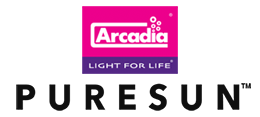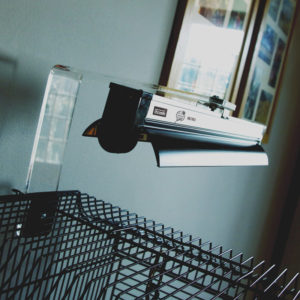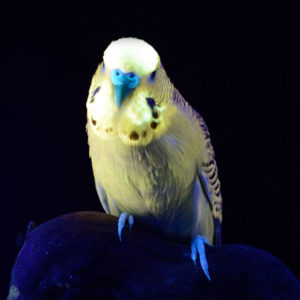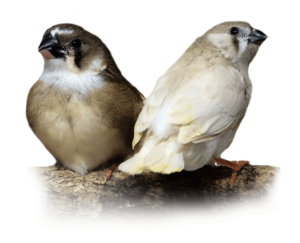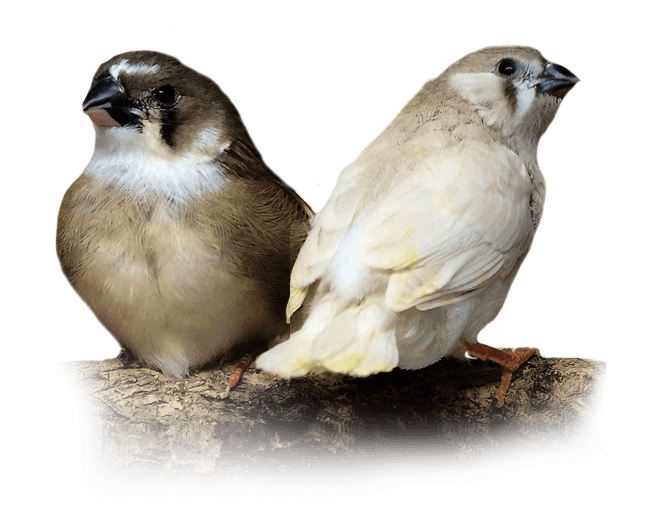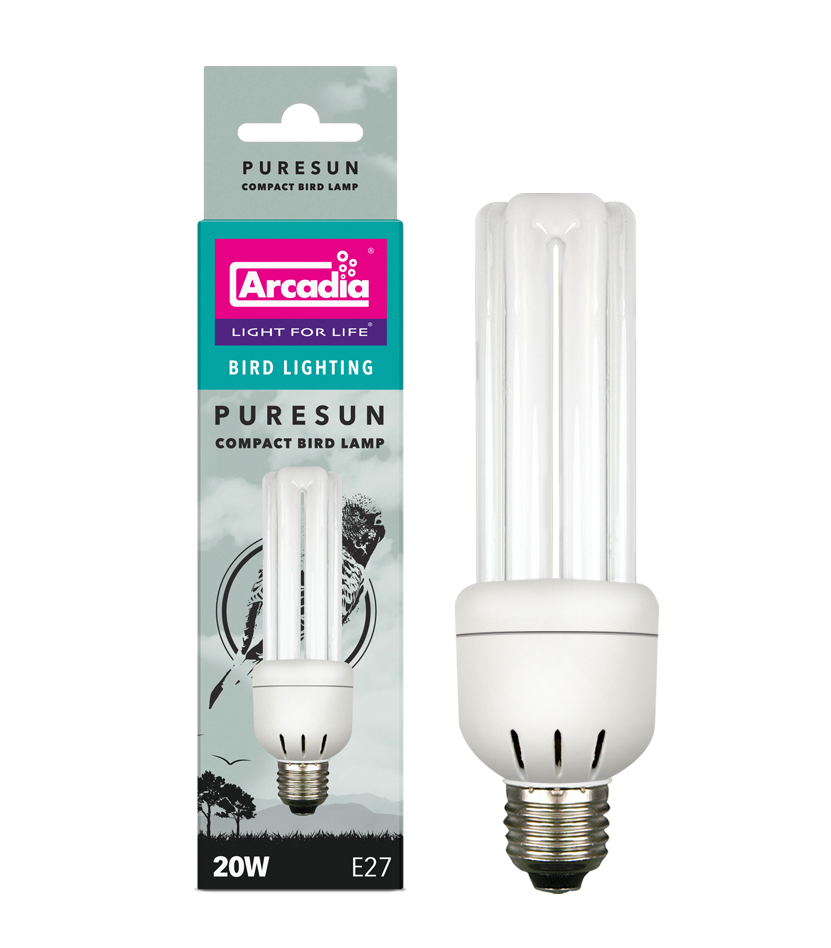Natural daylight is so important for your birds’ health, condition and wellbeing
The thinking and science behind birdkeeping has changed beyond all recognition in the past few years.
Many breeders are specialising with individual species rather than mixed collections and are exploring dietary additives, diets and natural daylight. 2012 saw new, cutting-edge research into birds and their relationship with light, and how photoperiods and the inclusion of ultraviolet (UV) light affect them.
Birds and reptiles are so similar to each other with regard to their sunlight requirements. Both animal groups use sunlight to produce vitamins and hormones inside their bodies, and both use sunlight to view the world. By denying a bird access to unfiltered sunlight or a synthetic source of UV, we effectively deny the bird the right to see as nature intended. That is a strong statement, which I will now try to explain.

Yellowhammer enjoying the sunshine: wild birds use tetrachromacy as a tool for mate selection or foraging.
“Tetrachromacy” is the term used to describe the inclusion of the allimportant fourth cone cell in the eyes of birds, reptiles and some fish. The inclusion of these four cone-shaped cells and the oil droplets that they contain opens up a whole new world to them. Humans use three cone-cells (trichromacy), so can view the world with “only” one million colours. Tetrachromats,by contrast, are able to see about 100 million colours. Humans don’t seem to be able to grasp how important this is for birds. Perhaps it is because we cannot view the world in this way ourselves.
A lack of D3 and calcium can cause painful and even fatal conditions in birds and reptiles.
The inclusion of this fourth cone-cell allows the bird to see wavelengths that humans cannot see, i.e. far into red and blue wavelengths. Birds and reptiles both appear to wear badges! Special fluorescent patches appear on the feathers and scales when viewed under the correct wavelength of light. Humans cannot see UV, so we have to use a black light to view these patches. Birds can see them all of the time if the tetrachromatic ability is “activated”.
These fluorescent patches seem to show the differences in the sexes (especially in what we see as monomorphics), health, condition and breeding readiness. It has also been shown that UVA affects how birds view food sources. It seems that riper fruits are easier to spot in dense foliage with the benefit of tetrachromacy.


Amazing colour: a myna bird as a human eye sees it (left) and as another bird would see it
So what is UVA?
UVA is the wavelengths of light between 320nm and 400nm. It is in the blue end of the spectrum and into ultraviolet. This wavelength is not short enough to start the D3 cycle on its own, but has many other reported effects in and around birds and reptiles. The D3 cycle is the ability of animals (including humans) to produce and utilise vitamin D3 in the skin, but only after exposure to unfiltered natural sunlight. A balanced provision of UVA will not only allow the animal to see in a more natural way, but has been linked to a better feeding response and a more constructive social behavioural pattern. It is now linked to the production of hormones and chemical processes in the brain.
A fully illuminated photoperiod including UVA has also been shown to aid in beneficial preening and daily cleaning. Most household lamps will emit a small amount of UVA. Unfortunately, the percentage of UVA that these lamps emit is not high enough to cause a reaction in the bird. If the total output of light including invisible light is called 100 per cent, we recommend that 12 per cent of the total should be UVA. All lamps have limitations and neither UVA nor UVB travel very far from the lamp. It is little use fitting a bird lamp in a birdroom ceiling. The birds need to be able to position themselves quite closely to the lamp to be able to utilise the emissions. It is vital that we do not confuse full-spectrum lamps that have a pleasing natural daylight colour with UV-emitting full-spectrum lamps. They are totally different.

Special fluorescent patches can be seen when a budgerigar is put under UV light.
We have all placed our birds by the window, but other than providing the birds with a warm, bright environment in which to live, it will have little positive effect on the bird, as the useful wavelengths will have been blocked. Small amounts of energy will be transmitted to the bird if the window is left open safely and the bird is in direct exposure to unfiltered sunlight. We can never truly harness the power of the sun or even replicate it. However, good UV-emitting bird lighting that has been fitted correctly does help birds immensely.
What about the other useful wavelength of light called UVB? UVB is the wavelengths of light between 280-320nm. This is far into the blue spectrum. This wavelength of light, which is invisible to humans, would need to be provided in enough power to start and complete the D3 cycle. Vitamin D3, among many other uses allows the assimilation of calcium. Without vitamin D3 in the correct levels, calcium cannot be absorbed into the animal’s system properly. Vitamin D3 is produced more effectively when light is emitted at 297nm. Birds and reptiles rely on this natural process to flourish in the wild. A lack of D3 and calcium can
cause painful and even fatal conditions in birds and reptiles. The most common of these is called “metabolic bone disease”, a terrible condition caused by a critical lack of calcium.
UVB cannot pass through most glasses and plastics, so placing your birds next to a closed window will bring no benefit to the bird. Unfiltered sunlight has a direct and dramatic effect on birds. With access to the right vitamins and hormones, birds will not only feel better in themselves, but they will be able to assimilate calcium properly. This will help with ensuring good bone density and feather production, as well as egg viability.
There is also a feeling now that a lack of D3 can cause birds to become miserable, which can lead to plucking and bad behaviour. In the same way as humans feel better after time in the sun, it is entirely probable that birds are affected in the same way.
Fortunately there does not seem to be a point of no return. As soon as UVB is provided, the subject seems to pick up.

Full-spectrum isn’t UV
FULL-SPECTRUM lamps should not be confused with full-spectrum+UV lamps. The term full-spectrum refers to the colour of the lamp. A full-spectrum or even some of the Seasonal Affective Disorder (SAD) lamps produce a colour of light that is close to natural daylight.
They have a very high CRI (colour rendition index), which in simple terms means these lamps will allow keepers to see their birds in the best way. However, these lamps do not emit UV. So, although the birds look good to us, these lamps may not provide any UVA or UVB for the bird to utilise.
Article by our expert, John Courtney-Smith, for Cage and Avairy Magazine.
